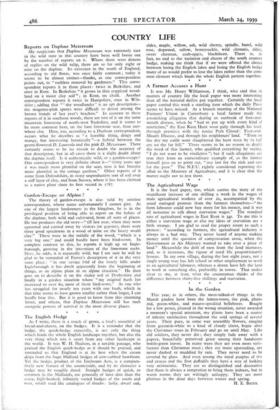Garden-Escape or Alpine ?
The theory of garden-escape is also held by another correspondent, whose name unfortunately I cannot give. As one of the largest landowners in the kingdom, he is in the privileged position of being able to report on the habits of the daphne, both wild and cultivated, from all sorts of places. He too produces the old story—" till last year, when they were uprooted and carried away by visitors (or gypsies), there weie three good specimens in a wood of mine on the heavy weald clay." These were in the middle of the wood, "which is a very big one," and could hardly have been bird-sown. In complete contrast to this, he reports it high up on Ingle- borough, growing in the interstices of the limestone rocks. Here, he adds, it is reputedly wild, but I am sure he will be glad to be reminded of Farreis description of it in the very same place : in one savage fold of the lonely hills under Ingleborough it has dwelt apparently from the beginning of things, as an alpine plant in an alpine situation." He then goes on to describe it on the shaley soil of Derbyshire and finally in a garden situation where "my original bush has increased to over 8o, most of them bird-sown." As one who has struggled for nearly ten years with one bush, which in that time seems to have grown smaller rather than larger, I can hardly bear this. But it is good to know from this charming letter, and others, that Daphne Mezereum still has such energetic powers of survival in the most diverse places.














































 Previous page
Previous page